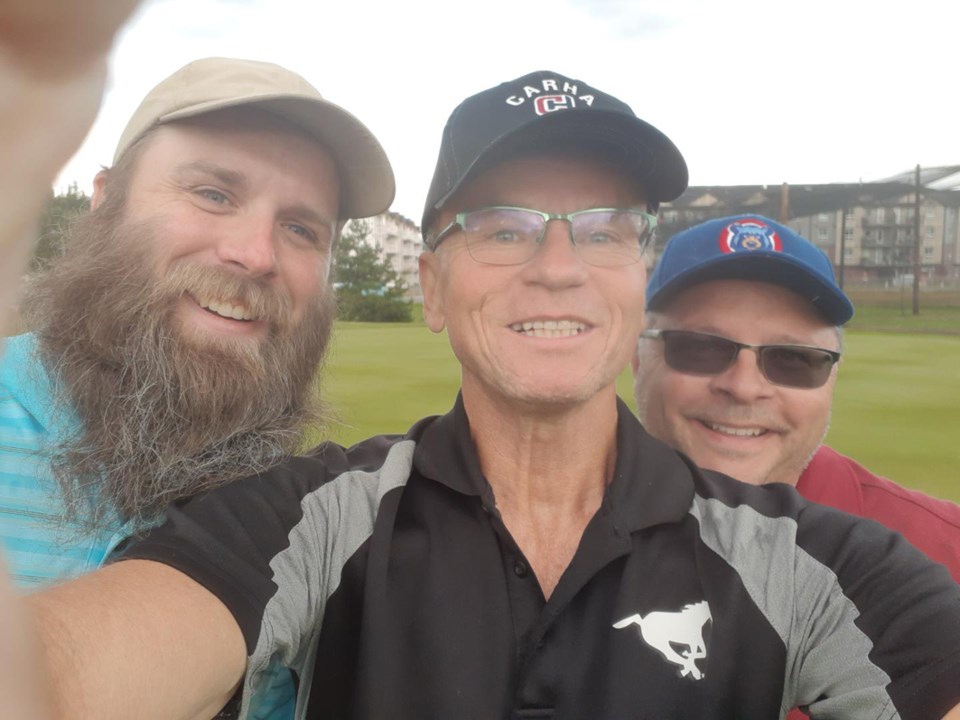Each week this summer, Citizen editor Neil Godbout will share his experience learning to golf at the Prince George Golf and Curling Club. Want to get in a free round with Neil? Just drop him a line at [email protected]
Week 14
Doctors often recommend anyone over 50 taking up a new exercise or sports regimen to check in with their family doctor first, especially there are underlying conditions.
If you’re not in decent physical and mental health already, make that appointment before taking up golf.
I’ve had to reduce my practice time and take days off as the summer has progressed. My hands and wrists ache after each round, even more so after I played rounds at the Prince George Golf and Curling Club on consecutive days last week. My hips have also been complaining for much of the summer.
Why am I surprised? I’m 53 years old with a dad body immersing myself in a new sport.
Swinging a golf club is a full body action, as club pro Blair Scott has stressed to me in my lessons, and successful hits require all those muscles working together, simultaneously. When it takes you more than 120 strokes to play 18 holes, plus hitting a bucket of balls at the driving range to warm up, you’re putting repetitive strain on muscles and joints unused to that kind of consistent effort.
The unsuccessful hits can also hurt. Driving the club into the ground behind the ball sends a horrible jarring feeling shaking up the entire length of your arms.
Walking the round is obviously decent exercise. Over the course of four hours, you’ll easily get in 15,000 steps and a good eight kilometres but your feet and legs better be ready for that, especially for more hilly courses. I’m an avid walker so that part has relatively easy for me.
And don’t forget your mental health.
If you are your own harshest critic and have a low tolerance for personal failure, especially around others, taking up golf isn’t humbling, it’s humiliating, a far more negative feeling that lingers like the physical aches and pains.
As I’ve learned over the summer, outlook and attitude are as important to your golf game as good technique and smart choices. After a disappointing shot, I’ve had to work hard to focus on the positive (I hit it straight, at least it’s on the fairway, I know what to do better on my next shot) rather than the negative.
During my round last Thursday with sports reporter Ted Clarke and photographer James Doyle, my colleagues reminded me of that. James is an excellent golfer, having grown up with the game. Ted is active in many sports but his golf clubs are almost as old as he is. Both of them got off to shaky starts (for them).
Ted shot a 62 on the front nine, one less than my 63. He hit it much further than me but was often in trouble and couldn’t putt to save his life. Then he shot a 45 on the back nine because he never stopped having fun and believing the next shot and the next hole would be better. He finished with a par on 17 and a birdie on 18.
The next day, I played in the Rotary scramble tournament with my fellow Nechako Rotarian Al Lefebrve and two younger, stronger players, Brandon and Adam Vickers. Since there were no minimum shots of mine they had to use, I was able to take our game as a practice round. As a result, I hit some good shots and made some decent putts throughout the round that our team did use, especially on the shorter holes.
The cooler September weather and the final month of my golf season beckons with promise and potential.




